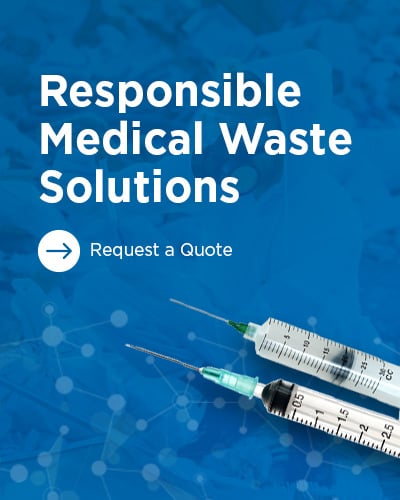Dental Effluent Guidelines Explained BACKGROUND The Environmental Protection Agency (EPA), Centers for Disease Control and Prevention (CDC), and Food and Drug Administration (FDA) have closely monitored and tested the effects of mercury and its use in the dental industry for many years. Since the early 1990s, these agencies have been researching the link between human and environmental health issues and mercury that ...
There are four main categories of medical waste in a dental office: sharps, infectious, hazardous, and non-hazardous. Learn about each here. As a waste management and compliance company we often get asked by dentists “What are the different types of waste I am required to dispose of and show documentation for?” There are four main types of dental waste, and each comes with its own standard for proper disposal. In this post we ...
For over a century, when encountering tooth decay, dentists have turned to amalgam putty as a solution. Dental amalgam is considered a safe and effective method for providing relief to the patient and preserving healthy tooth structure. However, since amalgam does contain a high percentage of elemental mercury, there are stringent regulations in place concerning its formation, use, and disposal. In this post we are going to ...
For over 150 years and for millions of patients, dentists have been using dental amalgam to fill cavities in teeth. What is dental amalgam? The FDA defines it as: “A mixture of metals, consisting of liquid (elemental) mercury and a powdered alloy composed of silver, tin, and copper. Approximately 50% of dental amalgam is elemental mercury by weight. The chemical properties of elemental mercury allow it to react with and bind ...
Background The Environmental Protection Agency (EPA), Centers for Disease Control and Prevention (CDC), and Food and Drug Administration (FDA) have closely monitored and tested the effects of mercury and its use in the dental industry for many years. Since the early 1990s, these agencies have been researching the link between human and environmental health issues and mercury that originated in dental offices as dental amalgam ...
The growing concern for the accumulation of mercury in fish and its environmental consequence has led some national and local agencies to come up with strict regulations of mercury in wastewater. When talking about mercury waste, dental offices have been identified as a major contributor of causing mercury waste (in the form of dental amalgam) environmental exposure. Recognized agencies have asked the dental practices to ...
Category
- sharps disposal (31)
- Medical Waste (29)
- sharps container disposal (26)
- Compliance (21)
- sharps mail back (20)
- Pharmaceutical Waste Disposal (14)
- Infection Control (13)
- Safety (13)
- Dental Practice (12)
- biohazardous waste disposal (11)
- OSHA (9)
- Hazardous Waste (8)
- amalgam disposal (8)
- patient support programs (8)
- Universal Waste (7)
- amalgam separators (6)
- vet sharps disposal (6)
- Hazardous Waste Disposal (5)
- News (5)
- amalgam recycling (5)
- dental clinical waste disposal (5)
- #GLP1 (4)
- Amalgam (4)
- ECOII Amalgam Separator (4)
- OSHA Training (4)
- News & Regulations (3)
- medication disposal (3)
- surface disinfectant (3)
- veterinary medical waste (3)
- HIPAA (2)
- flu vaccine (2)
- influenze (2)
- BioSURF (1)
- HIPAA Compliance (1)
- HIPAA Law (1)
- HIPAA Violation (1)
- RP Returns (1)
- improving patient experience (1)
- quart containers (1)
- sharps disposal for veterinarians (1)











